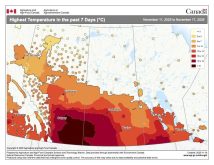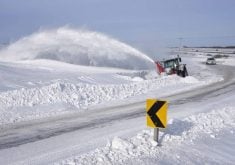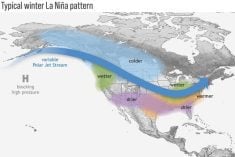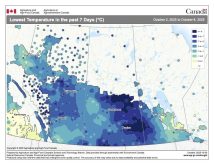For our latest instalment of Meteorology 101, I lump together two summer weather events: rainfall and humidity, which each have associated advisories and warnings.
Humidity, by its simplest definition, is the amount of water vapour in the air. The warmer the air, the greater the distance between air molecules and the greater the holding capacity for water vapour. Due to this relationship, warm air can hold much more water than cold air.
Relative humidity is the most common way it is reported. Unfortunately, it is probably one of the most misunderstood terms used in describing weather.
Read Also
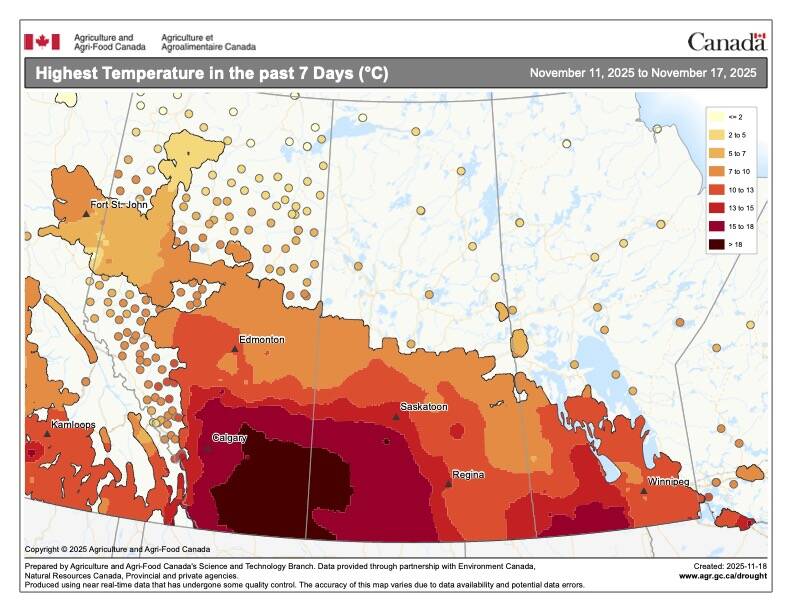
Farmer gift idea: How about a weather station?
The 2025 holiday season is looming, and a home weather station might make a great Christmas gift for farmers
Relative humidity is a ratio of the amount of water vapour in the air compared to the maximum it could hold under the same conditions, and is expressed as a percentage. For example, if we had an air temperature of 10 C and had eight grams of water vapour per kilogram of air, our relative humidity would be 100 per cent, since air at 10 C can hold eight grams of water vapour. If this same air warmed to 30 C and the amount of water vapour didn’t change, the relative humidity would be around 29 per cent, because air at 30 C can hold 28 grams.
This is where misunderstanding develops. When the air temperature is 10 C and the relative humidity is 100 per cent, people say it is humid, but once the temperature has warmed to 30 C and the relative humidity drops to 29 per cent, people say it is very dry. In reality, the amount of water vapour in the air has not changed, only the temperature.
A better way to measure humidity is by using the dew point. This measurement is a fairly simple way of telling us exactly how much moisture is in the air no matter how the temperature changes during the day.
The dew point is the temperature at which air cools enough for condensation (or dew) to form. In other words, it’s the air temperature that would give us 100 per cent relative humidity.
For example, if it is 18 C outside early in the morning and the dew point is 18 C, the relative humidity is 100 per cent. By the afternoon, as the air warms, the dew point would still be around 18 C if no additional water vapour was added or removed from the air, but the relative humidity would drop into the 50 per cent range.
The best way to determine humidity is this:
- If dew point is less than 10 C, the atmosphere is fairly dry.
- Dew points in the 10-15 C range are comfortable.
- Dew points in the 15-20 C range are humid, starting to feel uncomfortable.
- Dew points over 20 C are very humid and feel very uncomfortable.
- Dew points over 25 C mean it’s extremely humid, conditions will be very uncomfortable and can even be dangerous.
To make the point once more, if the dew point is 25 C, we know it is very humid, no matter what the temperature, but if the temperature is 35 C, the relative humidity is only around 55 per cent, and I guarantee at least one person would say it’s not that humid!
So remember, if it’s a hot summer day with dew points in the low 20s, even if the relative humidity is only 50 per cent, it is still humid.
Rainfall events
In terms of severe summer weather, we don’t tend to think about heavy or extreme rainfall until it creeps up on us. Considering the impact of heavy rain and flooding, it far outweighs most other severe summer weather events.
What is a heavy or extreme rainfall event? According to Environment Canada, rainfall warnings are issued according to the following criteria.
If it is going to be a short-duration event, such as a thunderstorm, more than 50 millimetres of rain within one hour must be expected before a rainfall warning will be issued, at least across the Prairies.
It is lower over the East and West Coasts because they rarely get the intense thunderstorms seen inland.
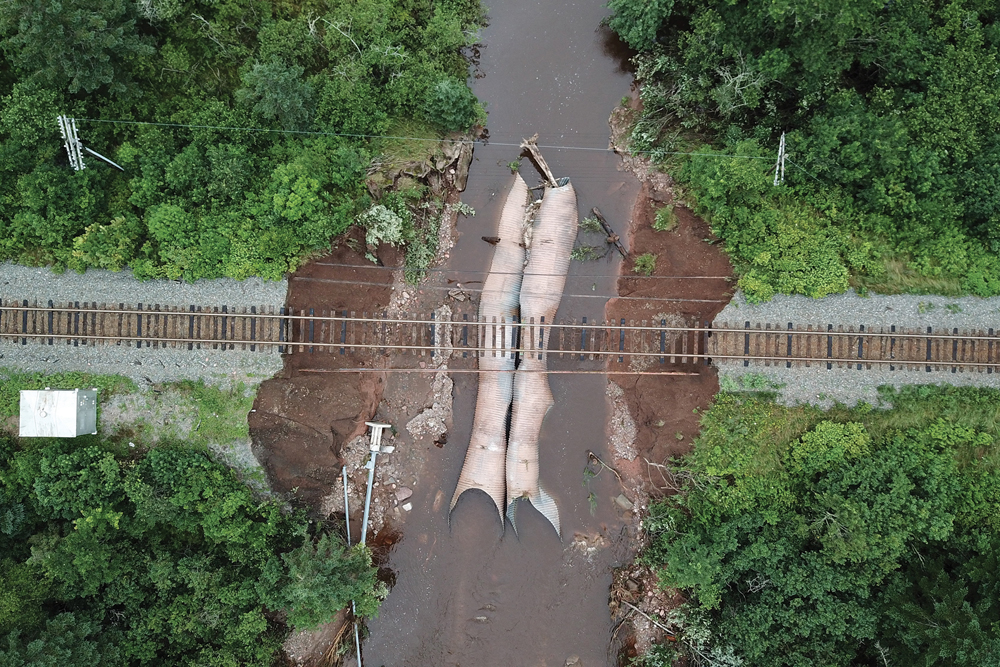
If the rainfall event is expected to be longer, a warning is issued when 50 mm of rain is expected within 24 hours or 75 mm of rain is expected within 48 hours. Sometimes, due to the nature of summer storms, you can have both types of warnings at the same time.
There has been plenty of talk connecting extreme rainfall events and global warming. I won’t get into arguments about global warming. My view is that our planet is getting warmer, whether or not you want to believe it.
Both air temperature and oceans are getting warmer. Combine warmer oceans with warmer air and you get an increase in humidity. This does not mean we will always see higher humidity, but rather, it means the atmosphere as a whole can hold more water vapour and is also receiving more water vapour.
All this water vapour must go somewhere and will eventually fall in some form of precipitation. The more water vapour available, the greater the chance that the precipitation will be an extreme event.




